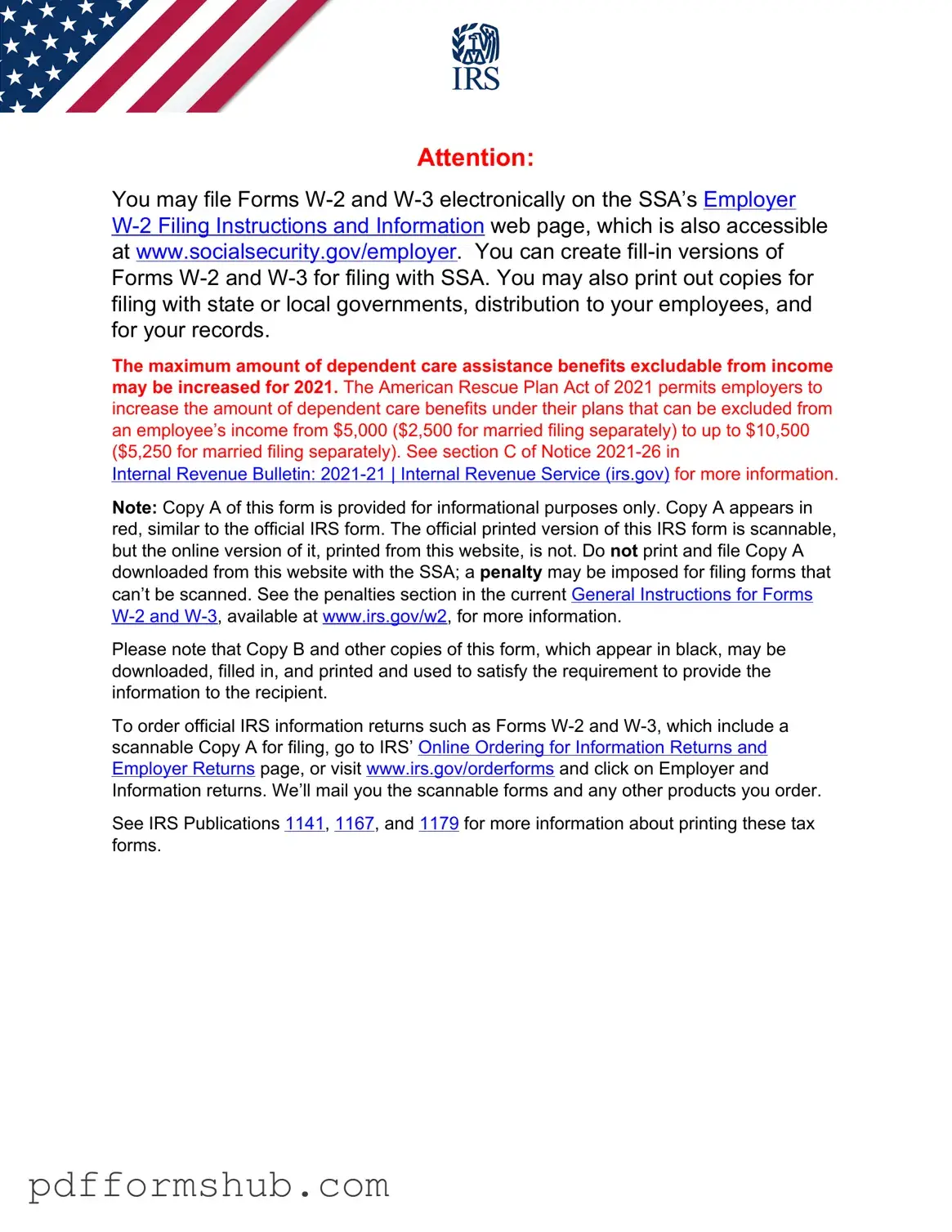The IRS W-2 form is an essential document for anyone who has earned wages in the United States. Each year, employers are required to provide this form to their employees, detailing the income earned and the taxes withheld throughout the year. This critical piece of paperwork not only ensures that employees can accurately report their earnings when filing their tax returns, but it also serves as a record for the IRS to track income and tax obligations. The W-2 includes important information such as the employee's Social Security number, the employer's identification details, and various tax withholdings, including federal, state, and local taxes. Understanding the W-2 form is vital for employees to avoid errors in their tax filings, which could lead to delays or penalties. With tax season approaching, being informed about how to read and utilize the W-2 can help ensure a smooth and stress-free filing process.
